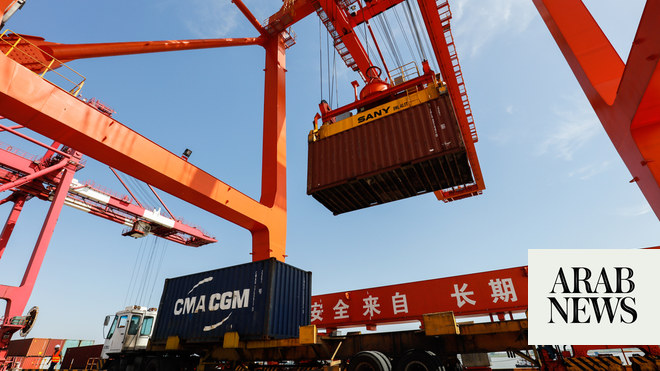
Downbeat data likely to reinforce expectations that Beijing needs to introduce more stimulus measures to avert a sharper economic downturn
BEIJING: China’s exports fell at a faster pace in September while imports contracted for a fifth straight month, pointing to further weakness in the economy and underlining the need for more stimulus as the Sino-US trade war drags on.
The downbeat data is likely to reinforce expectations that Beijing needs to introduce more stimulus measures to avert a sharper economic downturn, despite tentative signs of a thaw in tense trade relations between the world’s top economies.
Following talks last week, US President Donald Trump on Friday outlined the first phase of a deal to end the trade war and suspended a threatened tariff hike set for Oct. 15. But existing tariffs remain in place and officials on both sides said much more work is needed before an accord could be agreed.
September had marked another major escalation in the dispute, with Washington imposing 15 percent tariffs on more than $125 billion in Chinese imports from Sept. 1, and Beijing hitting back with retaliatory levies.
September exports fell 3.2 percent from a year earlier, the biggest fall since February, customs data showed on Monday. Analysts had expected a 3 percent decline in a Reuters poll after August’s 1 percent drop.
“The headline figures suggest that global demand softened last month, adding to the pressure from the US tariffs that went into effect in September,” said analysts at Capital Economics.
Some economists attributed the deterioration in exports to a fading in the so-called “front-loading” effect. Some Chinese firms had rushed to ship goods to the United States ahead of the September deadline, supporting overall July and August export readings.
Total September imports fell 8.5 percent after August’s 5.6 percent decline, the lowest since May. Analysts had expected them to fall by 5.2 percent.
Despite more than a year of growth boosting measures, China’s domestic demand has remained stubbornly weak as economic uncertainty weighs on business and consumer confidence and discourages fresh investment.
China reported a trade surplus of $39.65 billion last month, compared with a $34.84 billion surplus in August. Analysts had forecast $33.3 billion.
Its trade surplus with the United States stood at $25.88 billion in September, narrowing from August’s $26.96 billion.
China’s exports to the United States fell 10.7 percent from a year earlier in dollar terms in January-September, while US imports dropped 26.4 percent during that period, the customs data showed.
Though President Trump had agreed not to proceed with a hike in tariffs set for Tuesday, US Trade Representative Robert Lighthizer said Trump had not made a decision about tariffs that were subject to go into effect in December.
Analysts believe China’s economic growth cooled further in the third quarter from a near 30-year low of 6.2 percent hit in April-June, and is threatening to breach the lower end of the government’s full-year target of 6.0-6.5 percent.
Some economists forecast growth could fall into the upper 5 percent range in 2020 due to a combination of cyclical and structural factors.












